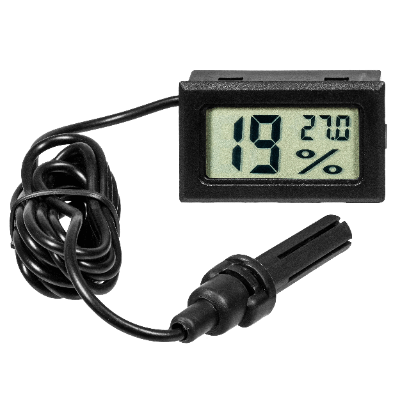What Is a Hygrothermograph?

Hygrothermographs are instruments that simultaneously measure and record temperature and humidity.
They are used both indoors and outdoors to monitor environmental conditions accurately. By tracking temperature and humidity, hygrothermographs aid in effectively managing air conditioning and humidification systems, ensuring comfortable living and working environments. These measurements are also crucial in industrial settings, where environmental conditions directly impact product quality and efficiency. In extreme conditions, such as high heat and humidity, they play a vital role in maintaining safety and preventing health risks like heatstroke.
For accurate readings, it’s essential to regularly calibrate hygrothermographs. Selecting a high-precision instrument is especially important in critical applications, and the accuracy should be confirmed based on specifications or manufacturer guidelines.
Applications of Hygrothermographs
Hygrothermographs are versatile and find applications in various fields:
1. Living Space Management
These devices help maintain comfortable and healthy indoor climates by monitoring room temperature and humidity. Proper environmental control can also lead to energy savings.
2. Industrial Process Control
In industries such as semiconductor manufacturing and chemical storage, strict control of temperature and humidity is essential. Hygrothermographs ensure consistent quality by monitoring these parameters during production.
3. Agriculture
Monitoring temperature and humidity is crucial for optimal crop growth. Hygrothermographs help in enhancing crop yield and quality and are instrumental in predicting and managing pest outbreaks.
Principle of Hygrothermograph
Hygrothermographs measure temperature and humidity using various sensors:
– Temperature is typically measured using electrical resistance sensors, thermistors, or thermocouples. These sensors respond to temperature changes by altering electrical resistance or generating a voltage difference.
– Humidity is measured with moisture-sensitive resistance sensors or capacitance sensors, which change resistance or capacitance in response to humidity levels.
Digital hygrothermographs convert these sensor signals into digital data, displaying the measurements on an integrated display.
How to Select a Hygrothermograph
Consider the following when choosing a hygrothermograph:
1. Size
Select a size appropriate for the intended location. Smaller devices are portable for personal use, while larger units are better for wall mounting in larger spaces.
2. Measurement Range
Ensure the device covers the necessary temperature and humidity ranges for your environment. Wider ranges are preferable for diverse or extreme conditions.
3. Power Supply
Choose between battery-powered or AC-powered models based on portability needs and usage duration. Battery-powered models offer flexibility, while AC-powered devices are suitable for continuous, long-term monitoring.